- Home
- Equipment Reviews
-
Amplification Digital Integrated Mono Block Preamplifier Phono Solid State Tube Analog Sources Cartridges Tape Tone Arms Turn Tables Digital Sources Digital Disc Players DACs Music Servers Streaming Music Services
-
Accessories Power Conditioners Room Accoustics Racks & Stands Audio Software Other iPod iPod Speakers iPod Headphones iPod Transports Headphones Over Ear On Ear In Ear Headphone Amplifier
-
- Audio News
- Event Reports
- California Audio Show, San Francisco
- Consumer Electronics Show
- T.H.E. Show
- Rocky Mountain Audio Fest
- AXPONA
- Salon Son & Image
- Hi-Fi Show & AV Expo
- High End
- Lone Star Audio Fest
- Capital Audio Fest
- TAVES - Toronto Audio Video Entertainment Show
- AK Fest
- Home Entertainment Show
- New York Audio $ AV Show
- Open House Events
- Spotlight
- Music
- The Columns
- 2024 California Audio Show
Latest Reviews & Audio News
-
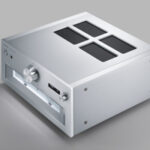
Technics SU-R1000 reference stereo integrated amplifier Review
(April 5, 2024) -

Computer Audio Design GC 1.1 & GC3.1 Ground Control external grounding systems Review
(April 5, 2024) -

Andy Grove of Audio Note UK on IO LTD
(March 23, 2024) -
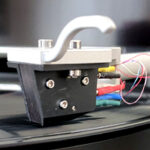
Audio Note UK IO Limited field-coil cartridge system Review
(March 26, 2024) -

EMM Labs MTRX monoblock Input Board Upgrade Review
(March 7, 2024) -

May 2018 Sibelius Violin Concerto concert video via Berliner Philharmoniker Digital Concert Hall app
(February 16, 2024) -
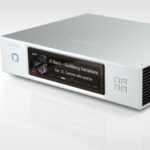
Aurender N20 Ultra High Performance digital output network transport Review
(February 15, 2024) -
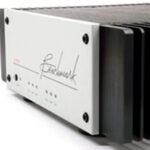
Benchmark Media AHB2 THX AAA stereo amplifiers Review
(January 18, 2024) -

Nelson Pass Interview 2023
(December 6, 2023) -

Interview with singer, pianist Fiona Joy Hawkins and singer, violinist Rebecca Daniel at 2023 CAS
(October 10, 2023) -
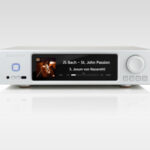
Aurender A20 reference analog output network player Review
(September 27, 2023) -
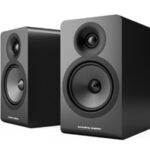
Acoustic Energy AE100² bookshelf speakers Review
(September 11, 2023) -

Clarisys Audio Minuet planar ribbon speaker system Review
(August 19, 2023) -

Clarisys Audio Interview
(August 7, 2023) -

Bricasti Design M21 dual-mono DSD, Ladder and Delta Sigma DAC Review
(December 9, 2023)
-
Categories
-
Amplification Digital Integrated Mono Block Preamplifier Phono Solid State Tube Analog Sources Cartridges Tape Tone Arms Turn Tables Digital Sources Digital Disc Players DACs Music Servers Streaming Music Services
-
Accessories Power Conditioners Room Accoustics Racks & Stands Audio Software Other iPod iPod Speakers iPod Headphones iPod Transports Headphones Over Ear On Ear In Ear Headphone Amplifier
Site Sections
Copyright ©1996-2024 All Rights Reserved.
Popups Powered By : XYZScripts.com

I have been seeing an interesting phenomenon in the Audio Industry over the last 10 years. That is the merger or acquisition of one or several audio brands with another group of brands.
The most recent is Sound United acquiring D+M Group as of March 1, 2017. The transaction is complete and now the unification process has begun with the group combined on line as of today. For Dagogo readers who may be unfamiliar with the two conglomerates, D+M Group’s portfolio of brands includes Denon, Marantz, Boston Acoustics and HEOS. Sound United has been running Polk Audio and Definitive Technology. The marriage is designed to continue Sound United’s expansion into new markets and product specialties.
According to their press release, “Combining D+M Group’s extensive market share and technology in the A/V receiver industry with Sound United’s leadership in the consumer audio market will better position all brands for success moving forward. The combined geographic performance of Sound United and D+M Group, will provide the means to reach into new corners of the market and continue our growth goals moving into 2017 and beyond.”
Another large acquisition was Fine Sounds’ acquisition of McIntosh from D&M a couple of years ago. That group now includes: McIntosh, Audio Research, Sonus Faber, Wadia, Pryma, Sumiko Subwoofers and WOM (which stands for World of McIntosh).
Other large groups include Harman International, VOXX International and Gibson to name but a few. Harman includes: Harman/Kardon, AKG, Infinity, JBL, Lexicon, Mark Levinson and Revel. VOXX International includes: Klipsch, RCA, Audiovox, Acoustic Research, Energy, Jamo, Magnat, MAC Audio, Heco, Advent, Jensen, Invision, Oeklbach, CodeAlarm, Prestige, Omega, 808, Rursuit, Schwaiger and Champ.
Gibson has three divisions. They are of course their music division, plus Gibson Pro Audio and their audio group. All in all they include: Gibson Guitars, Les Paul, Neat, Cakewalk, Onkyo, Stanton, KRK and Cerwin-Vega.
Back in 2011 when Gibson acquired Stanton they sent out this press release:
“Right now we have an extremely powerful brand that people recognize and value, but the musical instrument category is inherently limited because people who purchase instruments also need to know how to play them,” says Henry Juszkiewicz, Chairman and CEO of Gibson Guitar. “This new division is perfectly aligned with our core. It expands our reach to fellow music lovers and allows us access to 20 in 20 consumers instead of the one in 20 we currently hit.”
Whether this trend continues or not is to be seen. My best guess is that there will be more and more mergers of companies over time, mostly because there are tremendous advantages to the companies involved. For one reason, management costs go radically down. Also, it allows the sharing of technology and purchasing power.
Also, in most of these cases, each of the companies now has its own retail/on-line presence. This relates back to my December, 2016 article on “What Happened To HiFi.”
I will be watching the industry and will let you know as the trend continues.